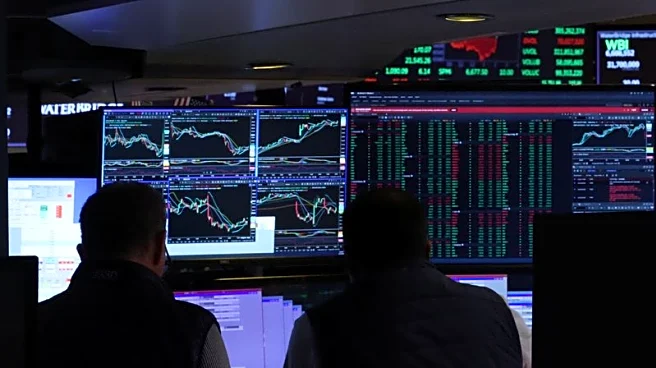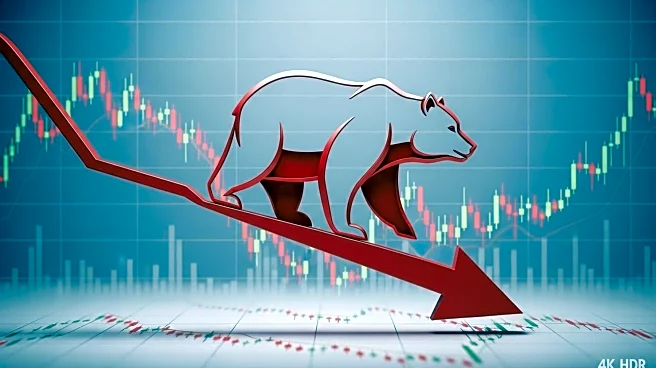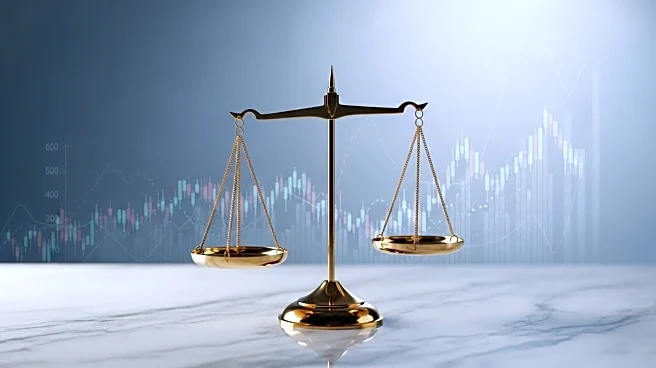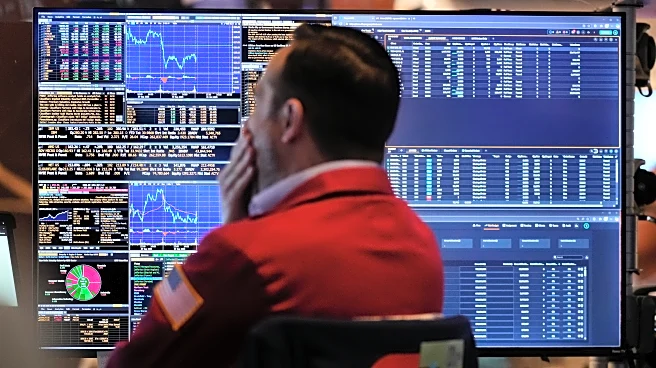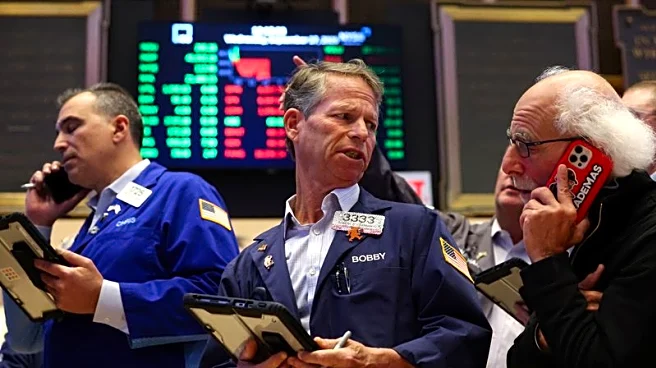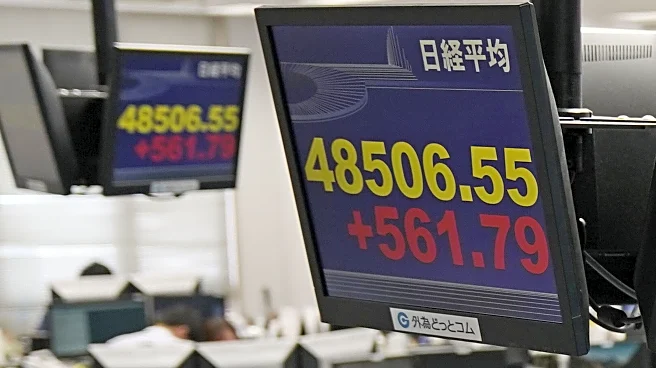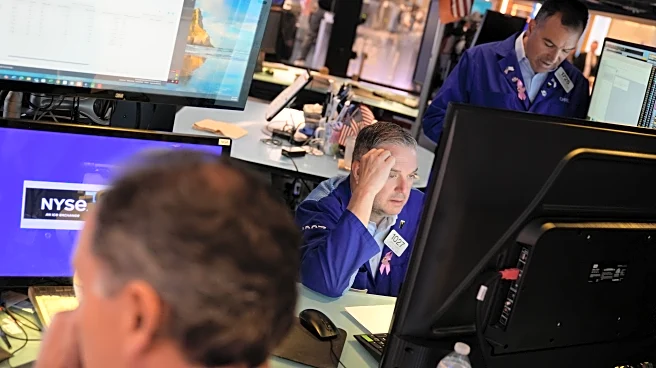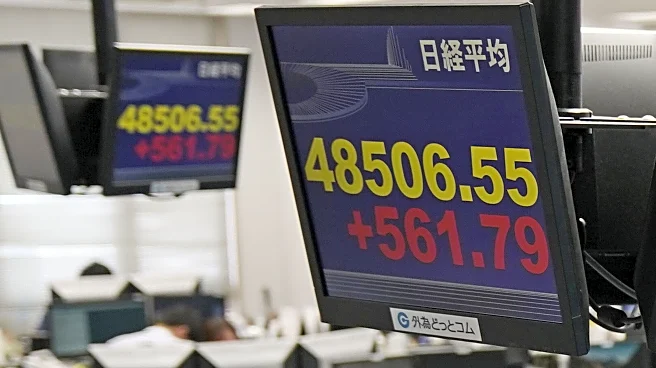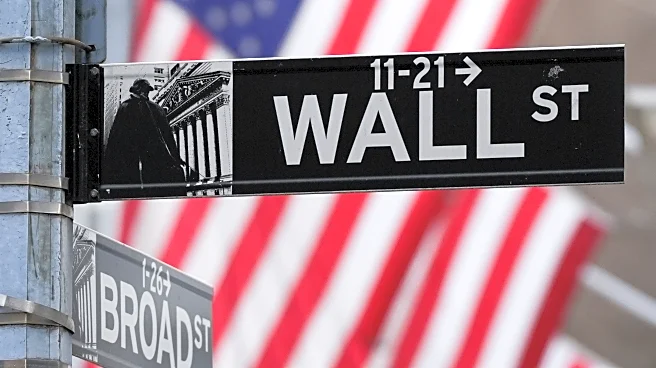What's Happening?
Short-bias exchange-traded funds (ETFs), which are designed to profit from declines in stock indexes and sectors such as technology and artificial intelligence, have seen substantial inflows recently. According to LSEG Lipper data, these funds attracted $3.7 billion globally in September, marking the largest monthly inflow in nearly three years. U.S.-based funds accounted for $2.2 billion of this total, while Japanese and South Korean funds received $653 million and $424 million, respectively. The trend has continued into October, with an additional $1.4 billion flowing into these funds. Historically, inflows into short-bias funds have increased during periods of market stress, such as the 2008 financial crisis, when broader funds struggled. The current surge in equities, driven by optimism around artificial intelligence and megacap tech firms like Nvidia, Microsoft, and Oracle, has pushed major indexes like the S&P 500, Nasdaq, and Dow to new highs. However, this has also led to warnings about potential market corrections from institutions like the Bank of England and the International Monetary Fund.
Why It's Important?
The significant inflows into short-bias ETFs indicate growing investor unease about the sustainability of current stock market valuations. As major indexes reach record highs, concerns about a potential correction are mounting. The Bank of England has highlighted risks such as U.S. auto credit stress and political deadlocks in France and Japan, while the Federal Reserve faces pressure that could lead to a sharp repricing of U.S. assets. International Monetary Fund chief Kristalina Georgieva has also warned of risks to the global economy from possible large corrections in stock markets. JPMorgan Chase CEO Jamie Dimon has echoed these concerns, predicting a significant correction in the U.S. stock market within the next six months to two years. The increased allocation to funds that profit from falling markets suggests that investors are preparing for potential downturns, which could have widespread implications for financial markets and economic stability.
What's Next?
If the concerns about a market correction materialize, it could lead to significant shifts in investment strategies and asset allocations. Investors may continue to increase their positions in short-bias ETFs as a hedge against potential declines in stock prices. Additionally, financial institutions and policymakers may need to address the underlying risks contributing to market instability, such as credit stress and geopolitical tensions. The Federal Reserve's actions and statements will be closely monitored for indications of how they plan to manage these risks. Furthermore, the performance of megacap tech firms and their influence on market trends will be a key factor in determining the direction of the stock market in the coming months.
Beyond the Headlines
The current situation highlights the broader implications of market speculation and the role of short-bias ETFs in providing investors with tools to manage risk. As these funds gain popularity, they may influence market dynamics by amplifying downward pressure during corrections. This could lead to increased volatility and impact investor confidence. Additionally, the focus on sectors like technology and artificial intelligence underscores the importance of innovation and its impact on market valuations. The interplay between technological advancements and market expectations will continue to shape investment strategies and economic outcomes.

